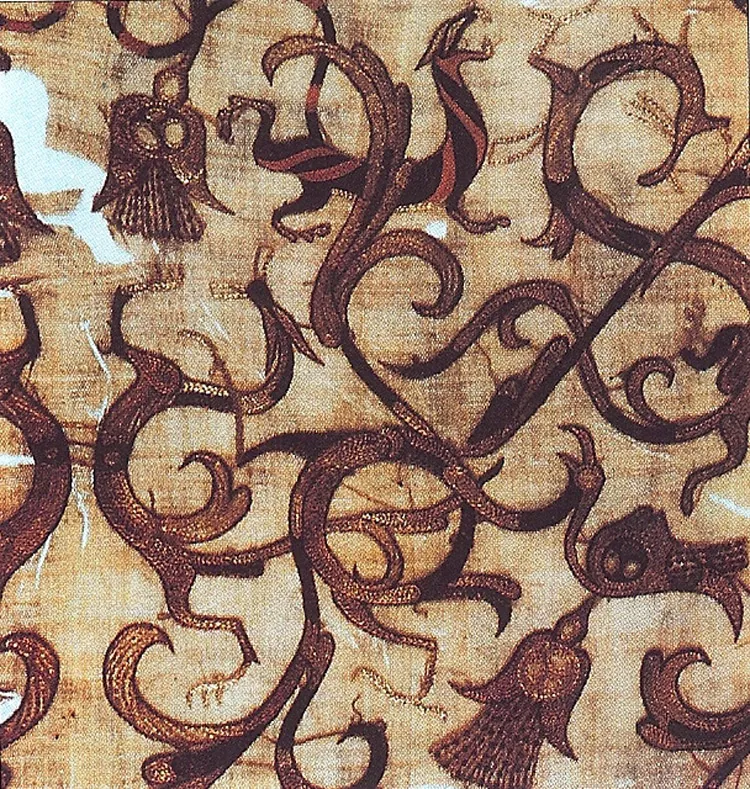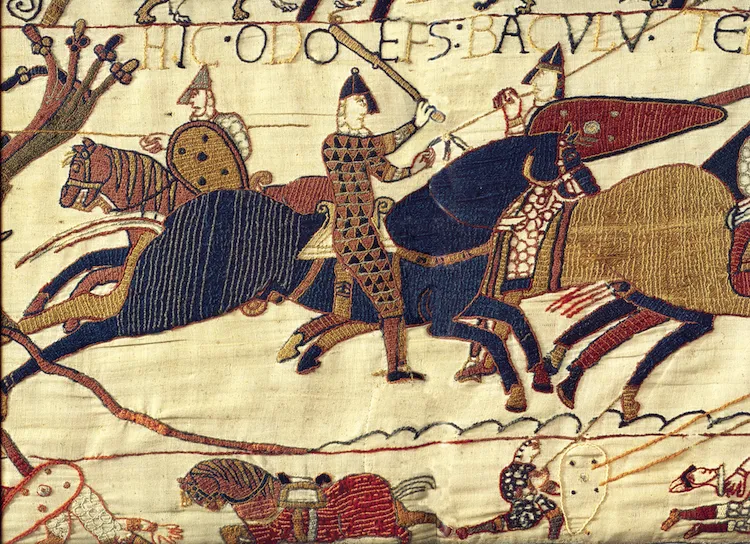Embroidery: A Rich History and Meaningful Craft
Uncover the fascinating history and meaning behind embroidery, a timeless craft with a rich cultural heritage.
Uncover the fascinating history and meaning behind embroidery, a timeless craft with a rich cultural heritage.
Main Factors That Influence Embroidery Work
Design Of The Embroidery
Embroidery was celebrated in many cultures, which reflected their traditions and techniques. These include the Japanese, Chinese, Ottoman Empire, etc. Some of the famous designs are named Brazilian Embroidery, blackwork, crazy quilting, chicken scratch, etc.
The secret language of Japanese Embroidery has great significance in their history. It is natively known as Nihon Shishu.
Japanese Embroidery originated in the Kofun Period 1,600 years ago. Their technique involves the use of intricate patterning, silk threads, and motifs illustrating symbols on beautiful silk fabrics.
It is used to embellish decorating items and produce kimonos that are worn in special Japanese ceremonies. Botanical symbolism is very famous in the region as each flower represents a relevant message based on its physical attributes.
For example, the cherry blossom represents beauty, pine trees express a sense of longevity and peonies show bravery.
Chinese Embroidery came into existence in the Neolithic age and was practiced mostly in silk due to the abundance of silk in China. It is still alive in the southern part of China today.
Some of the most popular styles include Song Jin (宋锦 Song embroidery) in Suzhou, Yun Jin (云锦 Cloud embroidery) in Nanjing, and Shu Jin (蜀锦 Shu embroidery) in Sichuan.
Yue Xiu/Guang Xiu (粤绣/广绣) is another major style that focuses on bright colors, symmetrical patterns, and a well-defined weave.
Materials Used For Embroidery
Embroidery tools such as threads, needles, scissors, hoops, and soluble pens are used for ease of use and professional results.
Embroidery hoops were made to fix the fabric rightly in place. If the fabric were too long, the large hoops would keep the fabric taut, and the straight posture would prevent the seamstress from getting exhausted.
The introduction of soluble pens made it easy to teach young learners, eradicate mistakes, and encourage them to get better.
Fabric Selection
Fabric selection is not really a problem. You can be washed, dried, and ironed before you start your work on it. The fabric should not be so weak that it breaks upon needlework. The needle should also be according to the strength of the fabric.
Types of Embroidery
There are several different types of machine and hand embroidery. Some of the most practiced types of embroidery are:
- Shadow Work Embroidery: Uses a difficult type stitch, the herringbone, on sheer or semi-translucent material.
- Fish-Scale Embroidery: Uses the scales of goldfish to complete the embroidery pattern.
Other more common and popular types are the crewel, cross-stitch, and surface. Each type is described more below.
Crewel Embroidery
Crewel embroidery is unique from all other types of embroidery because it uses wool rather than normal thread. The embroidery on the finished piece has texture and the stitches stand out due to the thickness of the wool used. The stitches and techniques are the same with crewel embroidery as regular thread embroidery. Crewelwork dates back to the 16th and 17th centuries in England and the American Colonies. Crewelwork was used to make furniture coverings and wall tapestries for the wealthy.
Typical motifs of crewel embroidery were birds, flowers, trees, and other nature-inspired scenes. Crewel embroidery uses special sewing needles. They are similar to embroidery needles in that one end is sharp and pointy, and they differ in the size of the eye of the needle. The eye needs to be quite large to accommodate the thick wool thread. The material needed for crewelwork is a sturdy twill or linen fabric. The fabric needs to be of good quality to accommodate the heavy wool stitching.
Cross-Stitching Embroidery
Surface Embroidery
Surface embroidery is the stitching of lines or patterns in such a way that the stitches lay on top of the fabric rather than through the fabric. Surface embroidery is decorative and delicate stitching for elaborate designs.
To unlock this lesson you must be a Study.com Member.
Create your account
Modern Day Embroidery
Modern embroidery encompasses a wide range of contemporary techniques and styles, thereby redefining the perception and practice of this ancient craft.
In the present day, embroidery is not limited to traditional garments; it has permeated popular culture, significantly influencing fashion, art, and home decor.
The incorporation of innovative materials and techniques has created new opportunities, enabling artisans to express their creativity in novel and engaging ways.
Contemporary Embroidery Techniques and Styles
Contemporary embroidery techniques and styles represent a significant evolution of the craft, blending traditional methods with modern artistic expression. Today, artists explore various materials, including unconventional fabrics and threads, thereby expanding the boundaries of what embroidery can achieve. From bold motifs to intricate stitch variations, contemporary works reflect the diverse influences of current culture, rendering the craft more accessible and relevant than ever.
In contrast to the rigid patterns that characterized historical embroidery, modern practitioners embrace spontaneity, frequently incorporating freehand techniques and abstract designs that celebrate individuality. This shift facilitates the flourishing of mixed media, as artists layer paint, beads, and other embellishments, resulting in multidimensional pieces that convey unique narratives.
The integration of technology, such as digital embroidery machines, introduces precision and innovation, further transforming this age-old craft. Through these varied approaches, contemporary embroidery serves not only as a medium of technique but also as a profound form of personal and cultural expression.
Embroidery in Popular Culture
Embroidery has increasingly permeated popular culture, emerging as a significant element in both fashion and artistic expression. Designers are now integrating embroidery into their collections, utilizing intricate designs to convey narratives and showcase individuality. This revival not only emphasizes the craftsmanship involved but also cultivates a greater appreciation for the artistry inherent in embroidered works.
In contemporary contexts, embroidery reflects broader cultural narratives and social movements, serving as a canvas for personal and political statements. From haute couture runways to street style, it acts as a bridge between traditional techniques and modern aesthetics, demonstrating how age-old practices can maintain their relevance.
Embroidery in the 19th and 20th Centuries
The 19th and 20th centuries represented significant transformative periods for embroidery, particularly due to the advent of industrialization, which revolutionized the mass production of embroidered textiles. As machines began to assume labor-intensive processes, embroidery evolved from a purely manual craft into a widely accessible hobby for many individuals.
This transition not only democratized the art form but also sparked a renewed interest in traditional techniques and patterns, resulting in a harmonious blend of machine-stitched designs and hand-stitched embellishments.
Industrialization and Mass Production of Embroidery
Industrialization had a profound impact on embroidery production, resulting in the emergence of machine-stitched designs that transformed the landscape of textile art. While traditional embroidery techniques continue to hold significant value, the efficiency offered by embroidery machines facilitated faster production and reduced costs, thereby making embroidered items accessible to a broader audience.
This transition has prompted a discussion within the embroidery community regarding the comparative value of handcrafted versus machine-made pieces.
Technological advancements not only optimized the production process but also enabled the creation of innovative patterns and designs that were previously challenging to achieve manually. However, this shift toward mechanization has introduced challenges, such as the potential dilution of artistic expression and the vital connection to cultural heritage.
Numerous artisans have expressed concerns that machine stitching may undermine the skill and dedication integral to traditional craftsmanship, often resulting in mass production that lacks the distinctive character of handcrafted works.
Nonetheless, for businesses seeking to meet heightened market demand, adopting modern embroidery techniques has frequently become a pragmatic choice, striking a balance between efficiency and the enduring appeal of artisanal quality.
Embroidery as a Hobby and Art Form



Tegs:
Search
Recent Posts
Subscribe to Updates
Get the latest posts and fashion insights directly in your inbox.